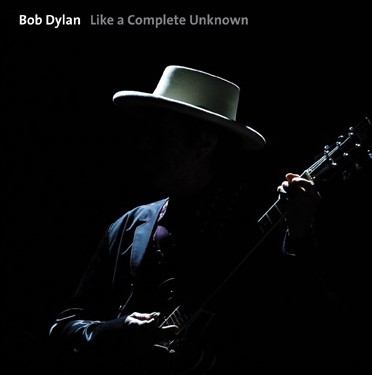I Is Someone Else: The Ever-changing Persona of Bob Dylan
“Je est un autre,” “I is someone else,” is one of Bob Dylan’s maxims. With 34 studio albums, over 500 songs, and a career that spans fifty years Bob Dylan’s voice is one recognizable to generations. Generations that each have their own memories of a different Dylan, a Dylan that belongs to each of them because he is both someone and someone’s. In David Yaffe’s Bob Dylan: Like a Complete Unknown audiences glimpse some of the factors shaping each version of Dylan. From his film career, to his voice, to his appreciation of African-American culture, Yaffe describes some of the major personal and cultural turning points in Dylan’s music throughout the years.
 One characteristic that has remained constant throughout the years, Yaffe notes, is his authenticity. Authenticity and change are not two things common to most musicians, perhaps embodied more recently only by Madonna. With songs that have been influenced by everything from Proust to slave songs, Dylan’s authenticity is nothing short of a marvel. In exploring this effort Yaffe found that Dylan, instead of trying to fit the culture of the times merely took it upon himself to create his own culture. Dylan’s authentic sounds, then, come from within. It comes from the years of being Bob Dylan with all the experiences, drugs, and alcohol that life encompassed.
One characteristic that has remained constant throughout the years, Yaffe notes, is his authenticity. Authenticity and change are not two things common to most musicians, perhaps embodied more recently only by Madonna. With songs that have been influenced by everything from Proust to slave songs, Dylan’s authenticity is nothing short of a marvel. In exploring this effort Yaffe found that Dylan, instead of trying to fit the culture of the times merely took it upon himself to create his own culture. Dylan’s authentic sounds, then, come from within. It comes from the years of being Bob Dylan with all the experiences, drugs, and alcohol that life encompassed.
The experiences Dylan had, the books he read, the music he listened to, and the movies he saw (or starred in) were influential to his work, Yaffe devotes an entire chapter to discussing the influences and samples of other works that have appeared in Dylan’s work over the years. In a culture where sampling is a dirty term in the music industry and the illegal art form has built an entire subculture, how has Bob Dylan’s managed to make it work so well? As Yaffe states, the work is seamless. Dylan has the ability to masterfully turn something that was not his into something that he fully owns. From Irish folklore to Proust to Mark Twain Dylan is able to fit together pieces from his box of inspiration to compose songs that speak to millions. Like the work of underground sampling mastermind Girl Talk, the borrowed pieces are transformed into something that speaks to an entirely new audience. In a recent interview Girl Talk said, “For me, often times the goal is to make something transformative . . . . I want it to be kind of removed from the original context. I want it to sound like something else.” Much like Dylan, Girl Talk is not one to change to satisfy someone else. After all, it was Dylan who said “To live outside the law you must be honest.” In both the laws of the country and the laws of popular culture Girl talk and Bob Dylan have found a space where they can transform ideas to speak to a new generation without losing themselves.
Like a complete unknown, one can never be sure which Dylan is going to appear onstage or in a recording next. In shrugging off the confines of culture and the traditional music industry standards Dylan is constantly evolving. Bob Dylan fans follow this evolutionary path, not always preferring the path he has taken, but loyal to him all the same. In reading Yaffe’s book, this is what makes Dylan, Dylan. The ability to consistently tour, sell albums, and be a benchmark of music for millions is overshadowed by the loyalty and the fervor of Bob Dylan fans across generations.


























